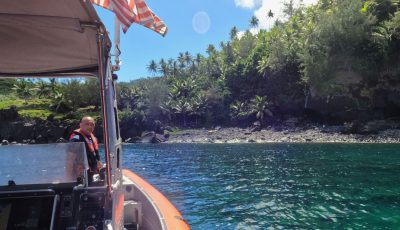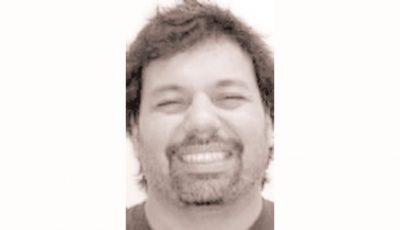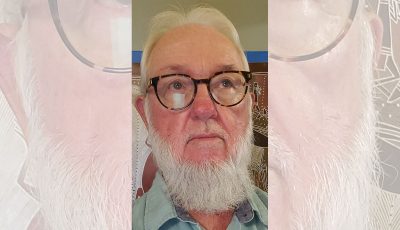Research looks into state of fish stocks in Northern Islands
An interagency effort of scientists led by Dr. Robert Humphreys of the Pacific Islands Fisheries Science Center recently concluded the first leg of their research in the Northern Islands between June 19 and July 3.
A presentation on what research they did up north was held Saturday evening at the American Memorial Park Auditorium in Garapan.

Dr. Robert Humphreys, of the Pacific Islands Fisheries Center, speaks to parents and children during the Oscar Elton Sette’s open house last Saturday. Humphreys is chief scientist on a 30-day research expedition in the Northern islands, whose second leg is ongoing and covers the waters of Pagan, Sarigan, Guguan, and Anatahan.
The bottom-fishing research occurred in the waters of Uracus, Maug, and Asuncion. Target species included deep-slope snappers, surgeon fish, and parrot fish.
Humphreys said the fish liked to gather around drop-offs and steep slopes underwater.
In Asuncion, an ancient lava flow on its western side formed a plateau that made for a straight drop-off. The research team was unable to collect data in the area, according to Humphreys.
To navigate the changing topography and depths of the islands’ waters, researchers used global positioning devices and electric and hydraulic reels, among other devices.
The instruments differed drastically from 30 years ago, according to Humphreys, when he last did research in the Northern Islands.
Humphrey’s research studies the life history of fish, collecting biological information to determine length at certain ages and longevity.
His data helps assess the fish stocks of the Northern Islands to detect trends in the fishery over time, to see if fisheries are depleted or still healthy. Humphreys explained that the data helps assess a stock’s vulnerability to fishing.
He gave mahi-mahi as an example of fish, with its lifespan of five years, whose high turnover makes it less likely to be knocked down to dangerous population levels.
On the other end of the scale, according to Humphreys, would be sharks who are not as reproductive.
From the sagittal otoliths—the earbones of bottomfish—scientists are able to assess marks on the bone to determine age.
One dating process dates the amount of radiocarbon in the earbone. Humphreys explained that in the early 1960s, nuclear testing resulted in the radioactive carbon-14 to fall in the water. The bomb radiocarbon was absorbed by coral skeletons and fish earbones alike. The earbones themselves are a “minerals,” according to Humphreys, consisting of calcium carbonate.
If bomb radiocarbon markings are high, it suggests the fish was alive during the time of nuclear testing. Humphreys said with this dating process some fish have been proven to be much older, sometimes as much as 20 years.
To measure reproduction in the fish, fish gonads are studied. The developing eggs can suggest the stage of the fish’s development.
Humphreys said otolith preparation and analysis as well as that with gonads took as much as one year. Other timelines for data collected on the trip, like water sampling, takes one to two years.
Todd Miller, another presenter, called the Marianas Archipelago unique because it spans a large environment gradient. Factors like ocean currents, temperature, and primary production of nutrients differ across this gradient.
He described the Marianas Archipelago as “perfect natural experiment” to test how these factors affect a fish’s growth, reproduction, and survival.
Another presenter, Ryan Okano of the CNMI’s Bureau of Environmental and Coastal Quality, claimed the hydrothermal vents in waters surrounding the Northern Islands like that of Uracus provide a “glimpse into the future” as acidic levels there can be used to gauge the effects of climate change on the world’s oceans.
Okano and other scientists also collected water samples during the trip, but there are no solid results yet as finding are only preliminary.
The second leg of the trip is ongoing and began on July 7. It will conclude on July 21.
As on the first leg of the trip, scientists and crew are aboard the Oscar Elton Sette, a research vessel from Honolulu.
The interagency research involves scientists from the National Oceanic and Atmospheric Administration’s Pacific Islands Fisheries Science Center and the CNMI’s Bureau of Environmental and Coastal Quality and Division of Fish and Wildlife. (By DENNIS B. CHAN, dennis_chan@saipantribune.com)



























